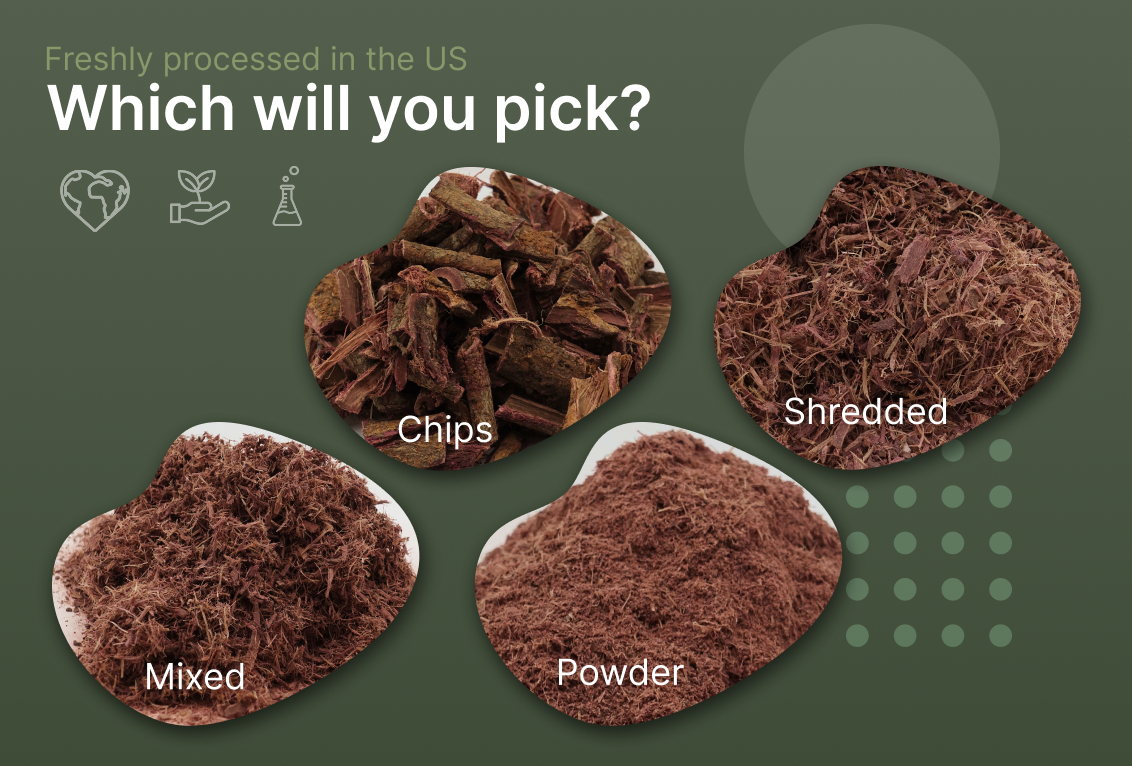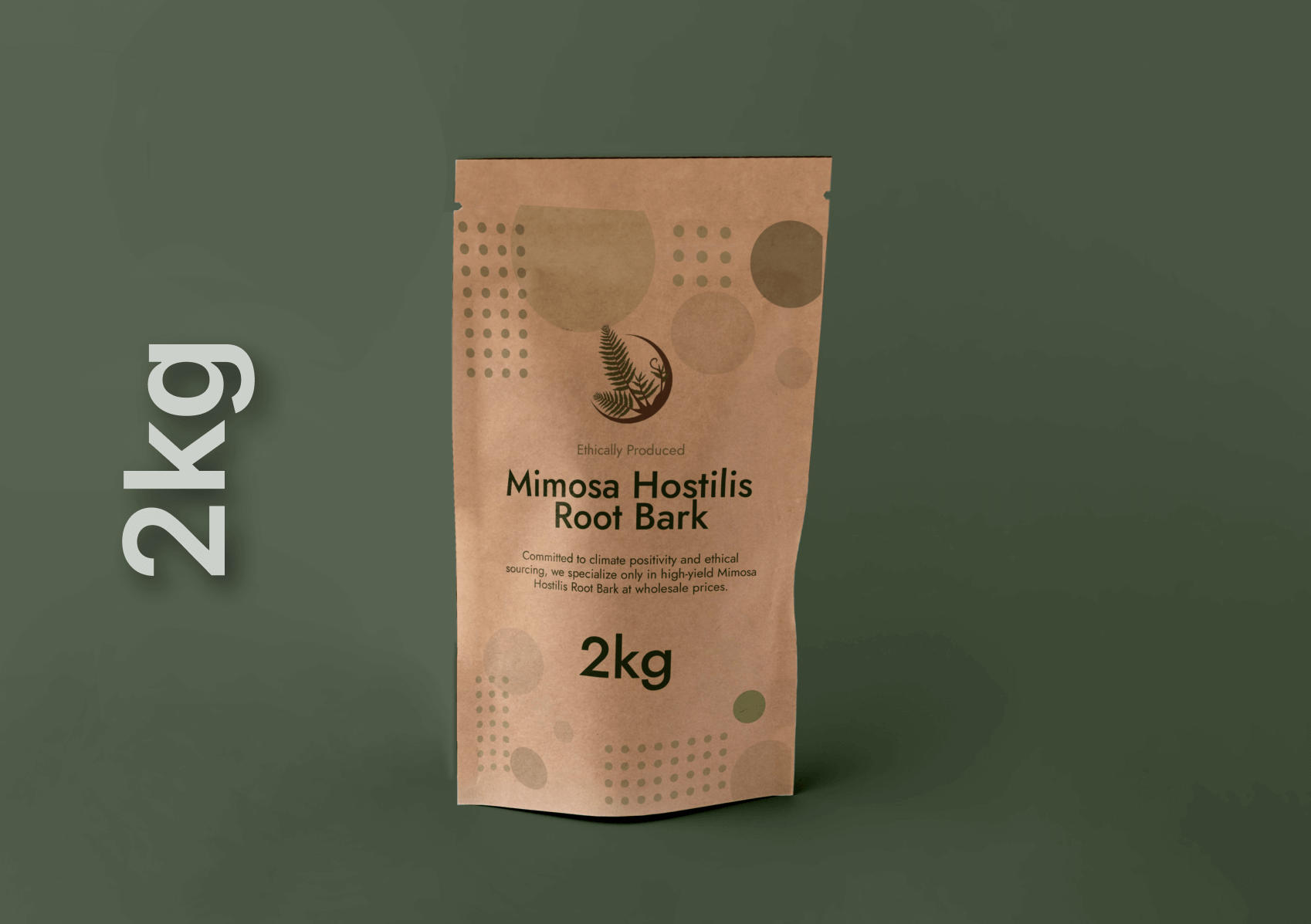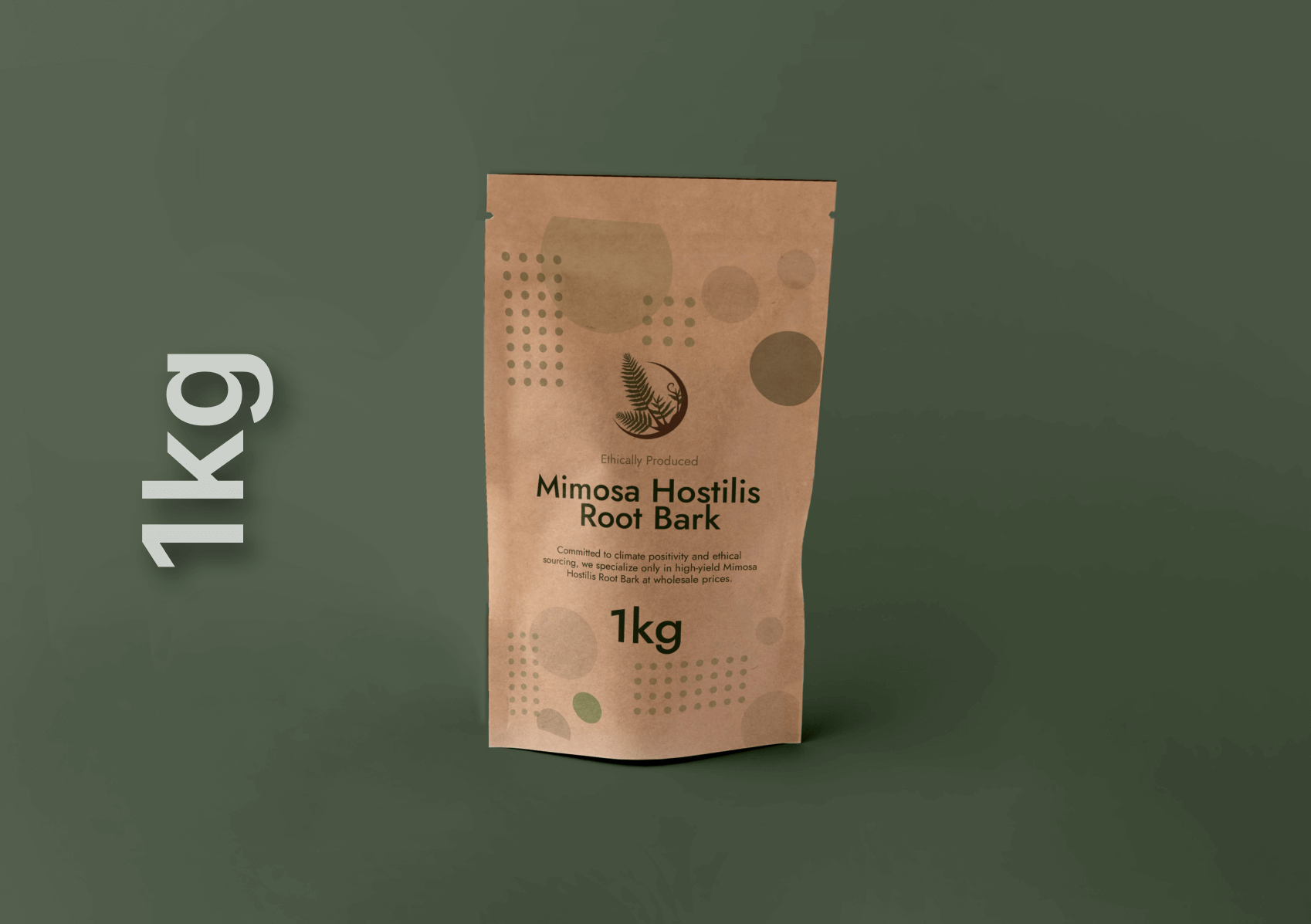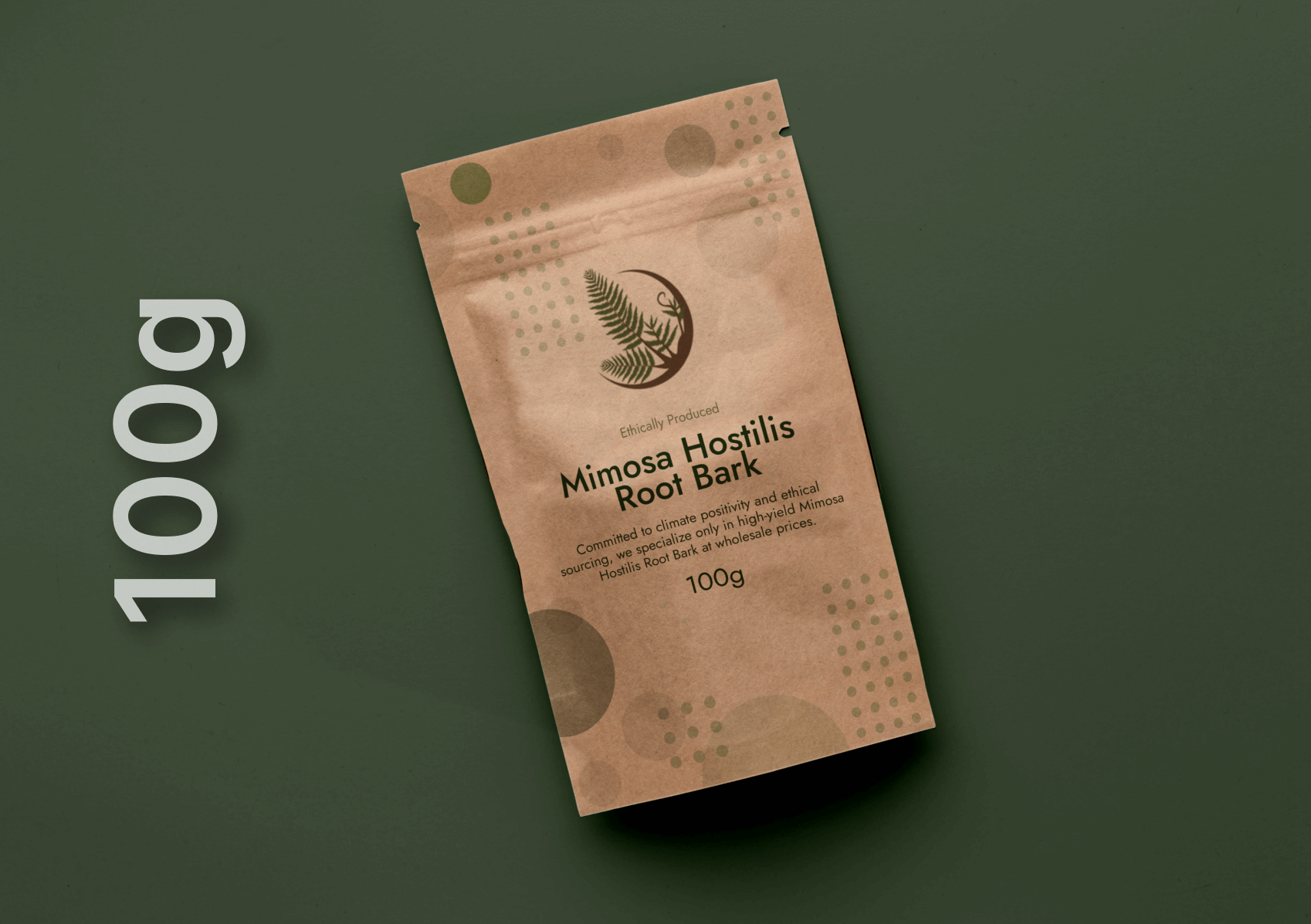Understanding Mimosa Hostilis Root Bark: The Foundation for Quality Assessment
What Makes Mimosa Hostilis Root Bark Unique?
Mimosa Hostilis root bark stands as one of nature’s most versatile botanical materials. Harvested from the Mimosa tenuiflora tree, this remarkable bark contains a complex array of compounds that make it valuable for natural dyeing, traditional skincare, and various artisanal applications.
The tree itself grows primarily in northeastern Brazil and parts of Mexico, where indigenous communities have recognized its properties for centuries. The root system develops a thick, fibrous bark that concentrates valuable compounds through years of growth in challenging soil conditions.
Chemical Composition and Active Compounds
High-quality Mimosa Hostilis root bark contains significant concentrations of tannins, which produce the deep purple and red dyes highly valued by textile artists. These tannins also provide preservative and antimicrobial properties, enhancing the bark’s usefulness in skincare formulations. In addition, the bark contains flavonoids, saponins, and various alkaloids that contribute to its therapeutic reputation. Scientific analysis reveals that the concentration of these compounds varies greatly depending on harvesting methods, processing techniques, and storage conditions. Understanding these chemical markers is essential when assessing quality, as superior MHRB retains higher levels of active compounds through proper handling.
Traditional Harvesting Practices
Authentic MHRB comes from trees that have reached sufficient maturity, typically 8-10 years old. Traditional harvesters know to collect bark from lateral roots rather than the main taproot, allowing the tree to survive and regenerate.
Seasonal timing affects quality significantly. The dry season, typically June through September in northeastern Brazil, produces bark with higher concentrations of active compounds. Trees stressed by dry conditions concentrate their chemical defenses in the root bark.
Sustainable harvesting involves careful selection of collection sites, rotation between different trees, and techniques that minimize damage to the root system. These practices directly impact the final product quality.
Processing Methods That Affect Quality
The transformation from fresh bark to the powdered product involves several critical steps. Proper drying techniques preserve the active compounds while preventing mold and bacterial contamination. Traditional sun-drying methods, when properly executed, maintain compound integrity better than rapid industrial drying. The bark should dry slowly and evenly, achieving a moisture content below 10% to prevent degradation.
Grinding techniques also influence final quality. Stone grinding or other low-heat methods prevent the thermal degradation that can occur with high-speed metal grinders. The resulting particle size affects both storage stability and application effectiveness.
Market Variations and Common Issues
The global MHRB market includes products of vastly different qualities. Understanding these variations helps consumers make informed purchasing decisions and avoid common pitfalls. Some suppliers offer bark that has been stored improperly, resulting in oxidation and compound degradation. Others may include outer bark or wood material to increase volume, diluting the concentration of active compounds.
Geographic origin significantly affects quality profiles. Brazilian MHRB typically contains higher tannin concentrations than Mexican varieties, though both can produce excellent results when properly processed.

Visual and Physical Characteristics of Premium MHRB
Color as a Quality Indicator
Premium Mimosa Hostilis root bark powder exhibits distinctive coloration that immediately indicates its quality level. Fresh, properly processed MHRB displays a rich purple-pink hue with burgundy undertones. The color should appear uniform throughout the powder, without significant variations or patches of brown or gray material. These darker areas often indicate oxidation, contamination with wood material, or improper storage conditions. When mixed with water, high-quality MHRB produces an immediate deep purple or wine-red solution. This color extraction happens quickly and intensely with premium material, while lower-quality bark may produce weaker or brownish solutions.
Texture and Particle Size Analysis
- Superior MHRB powder feels fine and consistent between the fingers, similar to cocoa powder or finely ground coffee. The particles should be relatively uniform in size, typically ranging from 40 to 80 mesh.
- Properly processed bark powder flows freely and doesn’t clump excessively. While some static cling is normal due to the fine particle size, large clumps or chunks indicate moisture problems or incomplete grinding.
- The powder should feel somewhat silky rather than gritty or rough. Excessive grittiness suggests the presence of sand, dirt, or incompletely processed bark material that can negatively impact applications.
Aroma and Scent Profiles
- Fresh, high-quality MHRB possesses a distinctive earthy aroma with subtle floral notes. The scent should be pleasant and organic, reminiscent of forest floor or rich soil after rain.
- Off-odors such as musty, sour, or chemical smells indicate problems with processing or storage. Moldy or fermented scents suggest moisture contamination that can lead to harmful bacterial or fungal growth.
- The intensity of the natural aroma correlates with compound concentration. Premium MHRB has a noticeable but not overwhelming scent that remains consistent throughout the batch.
Density and Weight Characteristics
- Quality MHRB powder has a specific density range that reflects proper processing and minimal contamination. Pure root bark powder typically weighs more per volume than material mixed with wood or other adulterants.
- A simple test involves comparing the weight of equal volumes from different suppliers. Significant variations may indicate differences in purity or processing methods.
- The powder should pack moderately when compressed but not become extremely dense or brick-like, which could indicate excessive moisture or contamination with heavier materials.
Moisture Content and Storage Stability
- Premium MHRB maintains low moisture content, typically between 8-12%, which preserves active compounds and prevents degradation. Properly dried material feels dry to the touch without being dusty or brittle.
- Excessive moisture content leads to clumping, color changes, and potential contamination issues. Material that feels damp or sticky requires immediate attention and may already be compromised.
- Well-processed MHRB maintains its characteristics over extended storage periods when kept in appropriate conditions. Quality degradation over short periods suggests initial processing problems.
Testing Methods for MHRB Quality Verification
Simple Home Testing Techniques
Several straightforward tests can help evaluate MHRB quality without specialized equipment. These methods provide valuable insights into the material’s potency and purity. The water extraction test offers immediate visual feedback about compound concentration. Mix one gram of MHRB powder with 100ml of room temperature water. High-quality material produces intense purple coloration within minutes.
pH testing using simple strips can reveal important information about the bark’s chemical profile. Fresh MHRB typically shows slightly acidic pH values between 4.5 and 6.0. Significantly higher or lower values may indicate contamination or degradation. A burn test can identify the presence of synthetic adulterants or excessive wood content. Pure MHRB powder burns cleanly with minimal ash residue and a characteristic organic smell.
Advanced Laboratory Analysis
- Professional testing provides definitive quality assessment through sophisticated analytical methods. These tests become worthwhile for large purchases or commercial applications.
- High-Performance Liquid Chromatography (HPLC) analysis identifies and quantifies specific compounds in the bark. This method can detect adulterants and verify the concentration of active compounds.
- Microbial testing ensures the absence of harmful bacteria, yeast, or mold that could pose health risks or indicate poor processing conditions. Quality suppliers often provide certificates of analysis including microbial counts.
- Heavy metal analysis checks for contamination with lead, mercury, cadmium, and other toxic metals that can accumulate in plant materials from polluted soil or processing equipment.
Dye Strength and Color Fastness Testing
- For users primarily interested in dyeing applications, specific tests evaluate the material’s performance in textile applications. These practical tests often correlate with overall quality.
- Standardized dye bath tests using white cotton fabric provide quantifiable results about color intensity and consistency. Premium MHRB produces deep, even colors with minimal variation across the fabric sample.
- Light fastness testing exposes dyed samples to controlled light conditions to evaluate color stability over time. Higher quality MHRB typically produces more light-fast colors due to better compound preservation.
- Wash fastness tests determine how well the dye bonds with fabric fibers. Superior MHRB creates stronger chemical bonds that resist fading through multiple wash cycles.
Comparing Multiple Suppliers
- Systematic comparison between different suppliers reveals significant quality variations and helps identify the most reliable sources. This approach requires careful documentation and standardized testing methods.
- Purchase small samples from multiple suppliers and conduct identical tests on each batch. Document visual characteristics, test results, and performance in your intended applications.
- Create a scoring system that weights different quality factors according to your specific needs. Dyeing applications might prioritize color intensity, while skincare applications focus more on purity and microbial safety.
- Track supplier consistency over time by testing multiple orders from the same source. Quality suppliers maintain consistent standards across different batches and seasons.
Documentation and Record Keeping
- Maintaining detailed records of quality assessments helps develop expertise in evaluating MHRB and builds a database for future purchasing decisions.
- Photograph samples under consistent lighting conditions to document visual characteristics. Digital images provide objective records that can be compared over time.
- Record supplier information, batch numbers, testing dates, and results in a standardized format. This documentation becomes invaluable for tracking quality trends and supplier performance.
- Note the correlation between test results and performance in actual applications. This practical feedback helps refine testing methods and quality standards.
Supplier Evaluation and Sourcing Considerations
Identifying Reputable Suppliers
Finding reliable MHRB suppliers requires research into their sourcing practices, processing methods, and quality control measures. Reputable suppliers provide transparent information about their operations and product specifications. Look for suppliers who can provide detailed information about harvest locations, processing facilities, and storage conditions. This transparency indicates professional operations that prioritize quality control.
Established suppliers often have relationships with traditional harvesters in Brazil and can provide information about sustainable collection practices. These connections ensure consistent supply and support local communities. Customer reviews and testimonials offer insights into supplier reliability, but focus on reviews from users with similar applications to your intended use. Dye artists and skincare formulators have different quality priorities.
Certification and Documentation
- Quality suppliers provide certificates of analysis (COA) that document testing results for each batch. These certificates should include information about active compound concentrations, microbial counts, and heavy metal analysis.
- Organic certification, while not always necessary, indicates suppliers who follow strict guidelines for cultivation and processing. This certification often correlates with higher overall quality standards.
- Chain of custody documentation tracks the material from harvest through processing to final packaging. This documentation ensures traceability and accountability throughout the supply chain.
- Import documentation and customs records provide additional verification of the product’s origin and compliance with international trade regulations.
Pricing and Value Analysis
- MHRB pricing varies significantly based on quality, processing methods, and supplier overhead. Understanding these price factors helps identify good value while avoiding poor-quality products.
- Extremely low prices often indicate compromised quality through dilution, poor processing, or inadequate storage. Premium MHRB commands higher prices due to careful harvesting, processing, and quality control.
- Calculate the true cost per application rather than just the price per kilogram. Higher-quality material often provides better performance, requiring smaller quantities for equivalent results.
- Consider shipping costs, minimum order quantities, and bulk pricing when evaluating suppliers. Some suppliers offer significant savings for larger orders while maintaining quality standards.
Communication and Customer Service
- Responsive customer service often indicates professional operations that stand behind their products. Quality suppliers answer technical questions knowledgeably and provide application guidance.
- Ask specific questions about harvesting seasons, processing methods, and storage conditions. Knowledgeable suppliers can provide detailed answers that help assess their expertise and quality standards.
- Request samples before placing large orders. Reputable suppliers are confident in their product quality and willing to provide small samples for evaluation.
- Evaluate how suppliers handle complaints or quality issues. Professional operations have clear policies for addressing problems and maintaining customer satisfaction.
Long-term Relationship Building
- Developing relationships with quality suppliers provides benefits beyond just product access. These relationships can provide insights into market conditions, new processing techniques, and seasonal availability.
- Communicate your quality standards and application requirements clearly. Suppliers who understand your needs can often provide customized processing or grading to meet specific requirements.
- Provide feedback about product performance and any quality issues. This information helps suppliers improve their processes and can lead to better products for all customers.
- Consider becoming a regular customer with preferred suppliers. Many suppliers offer priority access to the best batches and preferential pricing for loyal customers.
Storage and Preservation of High-Quality MHRB
Optimal Storage Conditions
Proper storage preserves MHRB quality and extends shelf life significantly. Even premium material can degrade rapidly under poor storage conditions, while proper care maintains quality for years. Temperature control is critical for long-term storage. Store MHRB in cool, stable temperatures between 60-70°F (15-21°C). Avoid areas with temperature fluctuations such as attics, basements, or locations near heating systems.
Humidity control prevents moisture absorption that can lead to clumping, color changes, and microbial contamination. Maintain relative humidity below 50% using desiccants or climate-controlled storage areas. Light exposure, particularly UV radiation, degrades active compounds over time. Store MHRB in dark containers or dark storage areas to prevent photodegradation.
Container Selection and Sealing
- Choose storage containers that provide excellent moisture barriers and chemical compatibility with MHRB. Food-grade containers designed for long-term storage work well for most applications.
- Glass jars with tight-fitting lids provide excellent protection against moisture and contamination. Dark glass offers additional protection against light exposure.
- Food-grade plastic containers with gamma seal lids create airtight seals suitable for larger quantities. Ensure the plastic is compatible with the slightly acidic nature of MHRB.
- Avoid metal containers that may react with compounds in the bark over extended periods. Stainless steel can work for short-term storage but may cause issues during long-term storage.
Monitoring Storage Quality
- Regular inspection of stored MHRB helps identify problems before they become serious. Establish a routine inspection schedule based on storage quantity and conditions.
- Check for visual changes in color or texture that might indicate degradation or contamination. Fresh MHRB maintains consistent coloration throughout storage periods.
- Monitor for moisture intrusion through condensation, clumping, or changes in texture. Address moisture problems immediately to prevent mold or bacterial growth.
- Document storage conditions and any changes observed over time. This information helps optimize storage methods and identify potential problems early.
Rotation and Inventory Management
- Implement first-in, first-out rotation to ensure older stock gets used before quality degradation occurs. Label containers with receipt dates and use the oldest material first.
- Divide large quantities into smaller containers to minimize exposure when accessing stored material. This approach reduces the frequency of opening large containers and exposing entire batches to air and moisture.
- Maintain inventory records that track purchase dates, supplier information, and quality assessments. This documentation helps identify the best suppliers and storage methods.
- Plan purchases based on actual usage rates to minimize storage time while maintaining adequate supplies. Fresh material generally performs better than material stored for extended periods.
Signs of Deterioration
- Recognizing early signs of quality degradation helps prevent the use of compromised material and protects the success of your applications.
- Color changes from the original purple-pink toward brown or gray indicate oxidation or compound breakdown. These changes typically correlate with reduced potency in applications.
- Odor changes, particularly musty, sour, or fermented smells, suggest microbial contamination that could pose health risks and certainly indicates quality loss.
- Texture changes such as unusual clumping, caking, or the development of visible mold require immediate attention and typically indicate that the material should be discarded.
- Reduced performance in test applications may indicate subtle quality degradation before visible signs appear. Regular testing of stored material helps identify problems early.
Applications and Quality Requirements
Natural Dyeing Applications
Natural dyeing represents one of the most popular uses for MHRB, and different dyeing applications have specific quality requirements that affect purchasing decisions. Textile dyeing requires MHRB with high tannin concentrations to achieve deep, lasting colors. Premium material produces intense purples and reds with excellent color fastness properties. The particle size affects dye extraction efficiency. Finer powders extract more completely but may be harder to filter from dye baths. Medium-fine grinds often provide the best balance for textile applications.
Consistency between batches is crucial for commercial dyeing operations. Suppliers who can provide consistent tannin levels and color characteristics become valuable partners for serious dyers. Fiber artists working with natural materials like wool, silk, and cotton achieve the best results with fresh, properly processed MHRB that hasn’t been subjected to chemical treatments or adulterants.
Skincare and Cosmetic Applications
- Skincare applications require the highest purity standards due to direct contact with human skin. Quality considerations for cosmetic use differ significantly from dyeing applications.
- Microbial safety becomes paramount for skincare preparations. The MHRB must be free from harmful bacteria, yeast, and mold that could cause skin irritation or infection.
- Heavy metal contamination poses serious health risks in cosmetic applications. Quality suppliers provide testing results showing safe levels of lead, mercury, cadmium, and other toxic metals.
- Particle size affects the texture and appearance of finished products. Finer powders integrate more smoothly into creams and lotions, while coarser materials may create gritty textures.
- The concentration of beneficial compounds like saponins and flavonoids determines the effectiveness of skincare preparations. Higher-quality bark provides better therapeutic benefits.
Traditional and Ceremonial Uses
- Traditional applications often require specific preparation methods and quality standards based on historical practices and cultural requirements.
- Authenticity becomes important for traditional uses. Material should be harvested and processed using methods that respect traditional practices and cultural significance.
- Purity standards for traditional applications may emphasize the absence of modern processing chemicals or synthetic additives that weren’t part of historical preparations.
- The relationship between supplier and harvester communities can affect the appropriateness of material for traditional uses. Ethical sourcing practices that benefit indigenous communities are often priorities.
- Preparation methods for traditional applications may require specific forms or processing techniques. Some applications work better with bark chips or shredded material rather than fine powder.
Research and Educational Applications
- Scientific research and educational applications require well-documented, consistent material with known chemical profiles and standardized processing methods.
- Batch-to-batch consistency becomes critical for research applications where reproducible results are necessary. Suppliers who maintain detailed records and standardized processes are preferred.
- Chain of custody documentation helps satisfy institutional requirements for research materials. Academic institutions often require detailed provenance information for purchased materials.
- Certificates of analysis provide the chemical data needed for research planning and regulatory compliance. These documents should include comprehensive testing results and processing information.
- Sample availability allows researchers to evaluate materials before committing to larger purchases. Quality suppliers understand research needs and provide appropriate sampling options.
Commercial and Industrial Applications
- Large-scale commercial users have unique requirements related to volume, consistency, and regulatory compliance that affect their quality standards.
- Regulatory compliance documentation becomes essential for commercial applications, particularly in cosmetics and textiles. Suppliers must provide comprehensive testing and certification information.
- Supply chain reliability is crucial for commercial operations that depend on consistent availability. Quality suppliers maintain adequate inventory and backup sourcing arrangements.
- Custom processing options allow commercial users to specify particle sizes, moisture content, and other parameters that optimize material for specific applications.
- Volume pricing and long-term contracts provide cost advantages for commercial users while ensuring quality standards are maintained across large quantities.
Quality Standards Comparison
- Different applications require different quality priorities, and understanding these variations helps buyers select the most appropriate material for their specific needs.
- Dyeing applications prioritize high tannin content and color consistency over other factors like particle size uniformity or microbial counts that are critical for cosmetic uses.
- Skincare applications emphasize purity, safety testing, and beneficial compound concentrations while being less concerned about color consistency that matters for dyeing.
- Traditional applications may value authentic harvesting and processing methods over some technical specifications that are important for commercial applications.
- Research applications require extensive documentation and batch consistency that may be less critical for hobbyist or artistic applications.
Red Flags and Common Quality Issues
Visual Warning Signs
Several visual indicators immediately reveal quality problems that can affect performance and safety. Learning to recognize these signs prevents disappointing results and potential health risks. Inconsistent coloration within a batch suggests mixing of different quality materials or improper processing. Premium MHRB maintains uniform purple-pink coloration throughout.
Excessive brown or gray coloring indicates oxidation, contamination with wood material, or age-related degradation. These color shifts correlate with reduced potency and performance. Visible foreign matter such as sand, twigs, leaves, or other plant material suggests poor cleaning and processing standards. Quality suppliers remove these contaminants during processing. Clumping or caking beyond normal powder behavior indicates moisture problems that can lead to microbial contamination and compound degradation.
Pricing Red Flags
- Pricing anomalies often signal quality issues or fraudulent practices that buyers should investigate before making purchasing decisions.
- Prices significantly below market rates typically indicate compromised quality through dilution, poor processing, or inadequate quality control measures.
- Lack of price variation between different grades or processing levels suggests that suppliers may not actually offer the quality differences they claim.
- Extremely high prices without corresponding quality documentation may indicate price gouging or exaggerated quality claims that don’t match the actual product.
- Hidden fees for shipping, handling, or testing that weren’t disclosed upfront suggest unprofessional business practices that may extend to quality control.
Supplier Communication Issues
- How suppliers communicate about their products reveals important information about their knowledge, honesty, and commitment to quality.
- Inability to answer basic questions about harvesting, processing, or storage suggests lack of knowledge about their own products or questionable supply chain transparency.
- Reluctance to provide samples, certificates of analysis, or other quality documentation indicates potential quality problems or unprofessional business practices.
- Exaggerated or unsubstantiated claims about potency, purity, or special processing methods without supporting documentation should raise immediate concerns.
- Pressure tactics or limited-time offers that don’t allow adequate evaluation time suggest suppliers more focused on sales than customer satisfaction.
Processing and Adulteration Issues
- Various processing shortcuts and deliberate adulteration can significantly reduce MHRB quality while being difficult to detect without proper testing.
- Dilution with wood chips, sawdust, or other plant materials reduces the concentration of active compounds while maintaining similar appearance.
- Chemical treatments used to enhance color or preserve material may introduce health risks and alter the natural properties of the bark.
- Improper drying methods that use excessive heat can degrade active compounds while creating material that appears properly processed.
- Cross-contamination with other plant materials or chemicals during processing or storage can introduce unwanted substances that affect performance and safety.
Documentation and Certification Problems
- Inadequate or fraudulent documentation represents serious quality risks that can affect both performance and legal compliance.
- Missing or incomplete certificates of analysis suggest suppliers who don’t maintain proper quality control or testing protocols.
- Photocopied or obviously altered documentation may indicate fraudulent practices or recycling of old test results for new batches.
- Certificates that don’t match the actual product characteristics revealed through simple testing suggest either fraudulent documentation or quality control problems.
- Lack of batch numbering or traceability information prevents proper quality tracking and makes it difficult to address problems or reorder successful batches.
Conclusion
Identifying high-quality Mimosa Hostilis root bark requires understanding the complex factors that influence its chemical composition, processing, and preservation. The distinctive purple-pink coloration, fine texture, and earthy aroma of premium MHRB serve as immediate visual and sensory indicators of quality. Successful quality assessment combines simple home testing methods with careful supplier evaluation and proper storage practices. The water extraction test, pH evaluation, and burn test offer accessible ways to verify material quality, while advanced laboratory analysis provides definitive results for commercial applications. Different uses demand different quality priorities—natural dyeing values high tannin content and color consistency, whereas skincare applications emphasize purity and safety testing. Understanding these distinctions helps buyers select the most suitable material for their needs.
Reputable suppliers offer transparency about harvesting practices, processing techniques, and quality control measures. They provide certificates of analysis, answer technical questions with expertise, and maintain consistency across batches. Proper storage in cool, dark, and dry conditions preserves MHRB quality over time, while regular monitoring prevents degradation that could reduce effectiveness. Recognizing warning signs—such as uneven coloration, unusually low prices, poor communication, or missing documentation—protects buyers from inferior or adulterated material. As demand for natural, sustainable resources continues to rise, high-quality MHRB becomes increasingly valuable for both traditional crafts and modern cosmetic applications. By applying these quality assessment practices, buyers can confidently source premium MHRB that delivers optimal results while promoting ethical and sustainable supply chains.
Frequently Asked Questions
What does high-quality Mimosa Hostilis root bark look like?
How can I tell if my MHRB is fresh and potent?
What are the signs of poor quality Mimosa Hostilis root bark?
Should I buy whole bark pieces or powdered Mimosa Hostilis?
Where should I source my Mimosa Hostilis root bark from?




